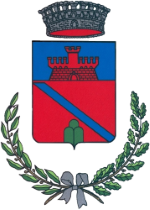
The Bait de Moléta appears as a typical farmhouse similar to others preserved in our valleys, but within it holds an exceptional artifact like a treasure chest: a sc’tùa (wood-lined room) among the oldest in the entire Upper Valley, dating back to 1556, as inscribed on a lowered beam. As soon as one passes through the doorway (strictly wooden, as was customary in the past), they are transported into another dimension, enveloped in the rural atmosphere of the 20th century. Smoke-blackened kitchens (cendré), pebbled floors (ric’) in the cellars, narrow wooden staircases, the hayloft (taulà) with air vents to dry the hay, the repeatedly repaired wooden cart, and the sc’tùe with small windows to retain heat—all highlight this unique dwelling. Massive masonry stoves (pigne) fed by neighboring kitchen chimneys dominate the scene.
The house was inhabited until the late 1990s and belonged to Ines and Severino Rocca. Their descendants have preserved it meticulously, treating it like a small museum where each room reveals fragments of peasant life and memories of those who lived there. Rustic spaces for animals, tools, or food storage alternate with areas for daily life, typically small to minimize heat loss. The sc’tùa, where the current large window replaced an originally smaller one, spans 22 square meters with a ceiling just over 2 meters high. Its floor is fir, and its paneling is of cirmolo wood.
The residence is privately owned and only open to visitors during the Sagra del Persighin, a festival in August celebrating Oga’s typical mushroom, and by appointment through the Valdisotto Tourist Office (Pro Loco Valdisotto). Tours include the ground floor rooms, the first floor, the cellars, and the external garden where the owner used to lay out potatoes after harvest. The former stable, once housing animals, has since been converted into a tool shed.






